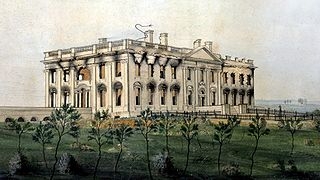
The stone exterior of the building was first painted with a lime-based whitewash in 1798 to protect it from the elements and freezing temperatures. According to the White House Historical Association, the “White House” moniker began to appear in newspapers before the War of 1812.
But it was President Theodore Roosevelt, who, in 1901, designated the official name of the residence of the U.S. president to be the White House. (Previous names included the Presidents’ House, the Executive Mansion, the Presidential Palace and the Presidential Mansion.) It also commonly goes by “The People’s House.”
At 55,000 square feet, the six-floor White House boasts 132 rooms (16 are family guest rooms), along with 35 bathrooms. According to the official White House web page, it’s home to 28 fireplaces, eight staircases, three elevators, 412 doors and 147 windows—and has a kitchen equipped to serve full dinner for up to 140 guests, or hors d’oeuvres for 1,000-plus visitors. And when it gets a new coat of paint every four to six years? It takes 570 gallons to cover the exterior.
The mansion and grounds also include a now-covered indoor swimming pool, installed for Franklin D. Roosevelt, and an outdoor pool, installed by Gerald R. Ford. Other on-site facilities where the president can let off some steam: a tennis court, one-lane bowling alley, small movie theater, game room, jogging track and putting green.
There are rumors of secret rooms in the building, but, according to the White House Historical Association, the only “secret” passage is an emergency shelter built under the East Wing during the presidency of Franklin Roosevelt, following the 1941 bombing of Pearl Harbor. Vice President Dick Cheney used the passage during the 9/11 terrorist attacks and, The Washington Post reports, President Donald Trump was likely sequestered there during a 2020 protest outside the White House.
According to the newspaper, at least two tunnels exist under the mansion: One connects to the Treasury Building, and the other leads to the South Lawn.
Credit : History
Picture Credit : Google




